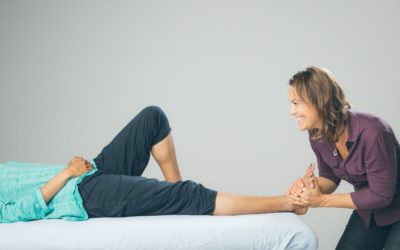Looking closer at Tendinosis…
We have already said that tendinosis was a non-inflammatory condition that is characterized by thin, frayed, and fragile tendon fibers. The bundles of collagen are disorganized, less oxygenated, fatty cells can be present as well as an increase in small blood vessels and small nerve ingrowth.
But what causes tendinosis?
Well, this is where tendinosis shows why it has been such a mystery and rather difficult to study all of these years.
It has been seen after large or small traumas, but it can also be caused from under-loading the tendon as well as overloading. A term that helps describe it’s cause is “fatigue damage accumulation.”
There is more risk of tendinosis with aged tendons, disuse, denervation, immobilization, compressive forces, changes in weight, activity, frequency of activity, and dysfunction in the joints, muscle or nerve.
The problem with the research up to this point regarding tendinosis, is that patients in intervention studies have not been selected based on what caused their tendinosis.
Did they have a story of over-loading or of under-loading? And, what if the cause of the tendinosis has not been corrected prior to applying an intervention?
For instance, if there is a mechanical problem in a joint that has created the tendon degeneration and you add exercise to the condition without correcting the joint dysfunction, then logically the problem would most likely get worse, not better.
If someone’s tendinosis was caused from immobility alone, then it would seem likely that beginning to load the tendon through exercise would be the solution, but then what if there has already been fatty infiltration or small nerve ingrowth in the tendon? Would this change things?
So, as a researcher and an experienced clinician, I say thank you to the research so far, which has given me some basic knowledge, principles. I will then test each client in-depth to discover what most likely was their particular cause in developing tendinopathy and apply logical, appropriate and specific interventions that target the likely cause(s) and not just a cookie-cutter method of treating every single tendon.
And, the great thing is… the body will tell us if we have chosen the correct intervention. And, if it is not working, then we change our theory. Each person is a puzzle. And the longer I work and look intently at each case that is presented to me, the better I get at putting that person’s pieces together.
Sometimes I wish my job were simpler, but then perhaps it wouldn’t be so satisfying.
And, maybe it is the same for you in your part of healing? I’m sure you wish that healing were simpler and didn’t take so much effort on your part, but then perhaps you wouldn’t feel so satisfied with your progress.
Okay.
Let’s keep working.
Rebecca Lowe, Integrative Physical Therapist with a specialty in advanced Orthopedic Manual Physical Therapy, yoga instructor, managing director of Manual Therapy of Nashville



0 Comments